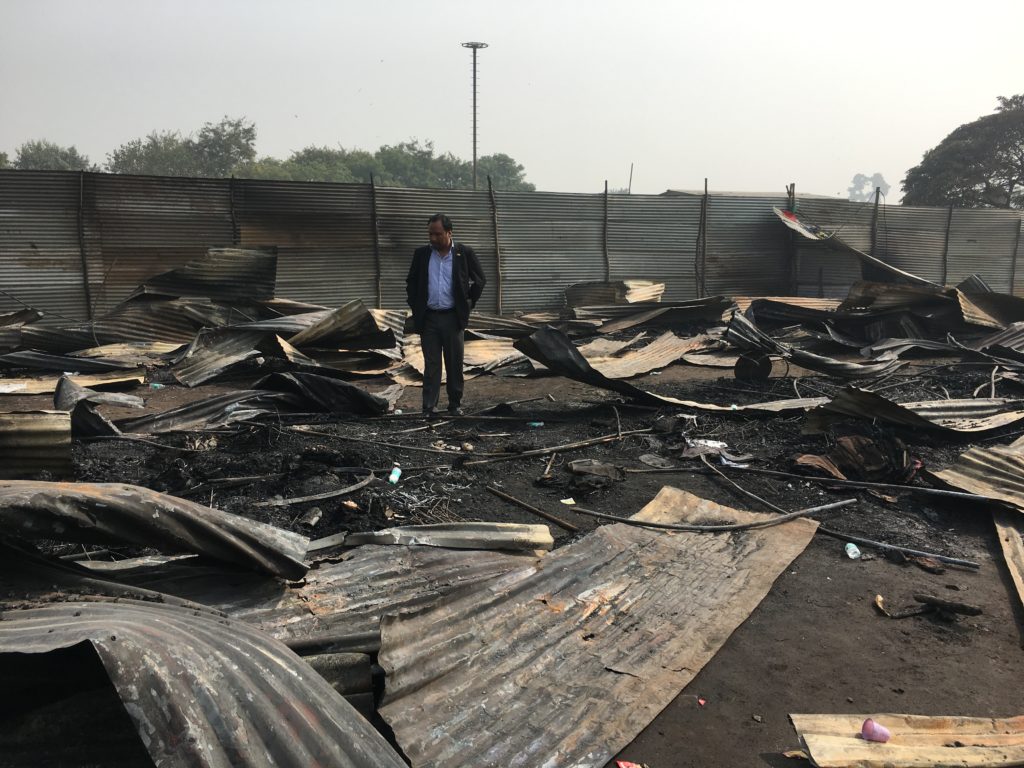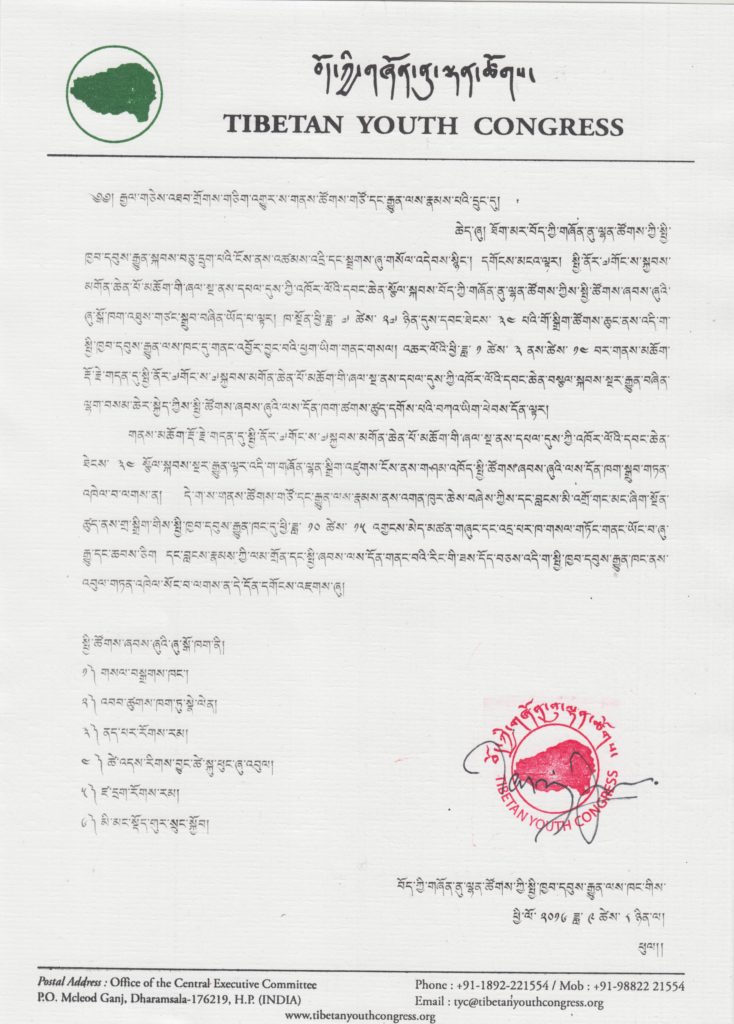Urgent Circular to all the Regional Tibetan Youth Congress chapters in North East India regarding the upcoming visit of HH the Dalai Lama to Assam and Arunachal Pradesh.

Urgent Circular to all the Regional Tibetan Youth Congress chapters in North East India regarding the upcoming visit of HH the Dalai Lama to Assam and Arunachal Pradesh.

Tibetan Youth Congress Central Executive board members will be touring India, Nepal and Bhutan from April-May 2017 to meet with Regional TYC Chapter members, community and students and talk about the organisation, the current status of our struggle, youth responsibility and importance of democracy.

Tibetan Youth Congress Central Executive board members will be touring India, Nepal and Bhutan from April-May 2017 to meet with Regional TYC Chapter members, community and students and talk about the organisation, the current status of our struggle, youth responsibility and importance of democracy.

BODH GAYA: Social services are in full swing at the largest Buddhist congregation in Bodh Gaya where an estimated 2 lakh devotees have come to attend the Kalachakra Initiation, organised by the Central Tibetan Administration.
An army of volunteers, clad in yellow uniforms are seen offering help to old aged devotees, lost children, receiving devotees at railway stations/airports and securing the devotees’ camps day and night.
Under the maxim of ‘Service to people’, the volunteers of Tibetan Youth Congress organisation are organising one of the largest social service, aimed at ensuring ease and chaos-free teaching experience for all devotees.
In an interview with Tibet.net. Mr Tenzing Jigme, President of TYC introduced the string of services led in action from 23 December, “We are aiming to provide maximum service to all devotees gathered for the Kalachakra teachings. A special feature of our social service program during this Kalachakra is the wheelchair service through which we enable many old aged pilgrims and differently abled, to circumambulate the Mahabodhi stupa, visit nearby monasteries and make smooth passage to and fro from Kalachakra teachings to their rooms.”
This massive welfare service is being achieved through a team of 250 volunteers from 19 regional Tibetan Youth Congress and TYC chapter members from five different colleges across India.
Social Service Actions in place under the aegis of TYC.
Click on the link to read full article. http://tibet.net/2017/01/34th-kalachakra-brimming-with-spirit-of-social-service/

TYC President, Organizational secretary along the Rtyc Delhi President visited Lal Qila Tibetan Sweater Sellers Market this morning. TYC made a donation of Rs. One Lakh and we urge all Tibetans to make donations towards the Emergency Relief Fund. Estimated losses are around Rs.7-10 lakh average per shop and 138 shops have been completely destroyed by the fire. The Tibetans there are in desperate need for support financially and could use every bit of donation we can make. We urge all Tibetans to act and make a donation for our brothers and sisters in this time of need.





TYC President, Organizational secretary along the Rtyc Delhi President visited Lal Qila Tibetan Sweater Sellers Market this morning. TYC made a donation of Rs. One Lakh and we urge all Tibetans to make donations towards the Emergency Relief Fund. Estimated losses are around Rs.7-10 lakh average per shop and 138 shops have been completely destroyed by the fire. The Tibetans there are in desperate need for support financially and could use every bit of donation we can make. We urge all Tibetans to act and make a donation for our brothers and sisters in this time of need.




Opportunity for Regional Tibetan Youth Congress chapters to volunteer at the upcoming Kalachakra in Bodh Gaya from Jan 3 – 14, 2017.

TYC Centrex 2016
President – Tenzing Jigme
Vice President – Tamdin Hrichoe
General Secretary – Tashi Lamsang
Joint Secretary – Ngawang Lobsang
Culture Secretary – Tashi Dhondup
Information Secretary – Tsewang Dolma
International Relations Secretary – Nyima Yangzom
Organizational Secretary – Pempa Tsering
Social Service Secretary – Tashi Dhargyal
Finance Secretary – Dickey Lhasawa

Photo: 2015 and 2016 Central Executive Members with HH the Dalai Lama.